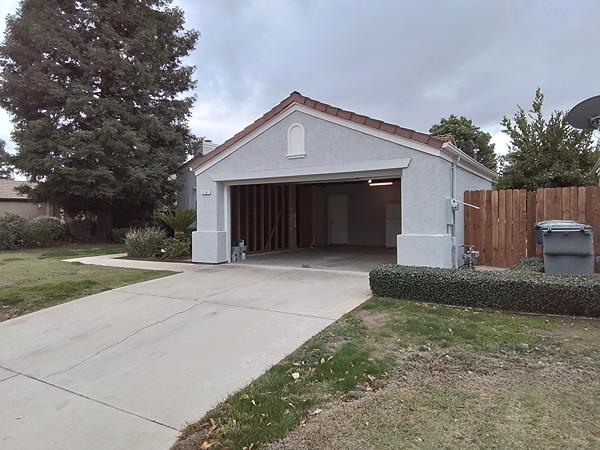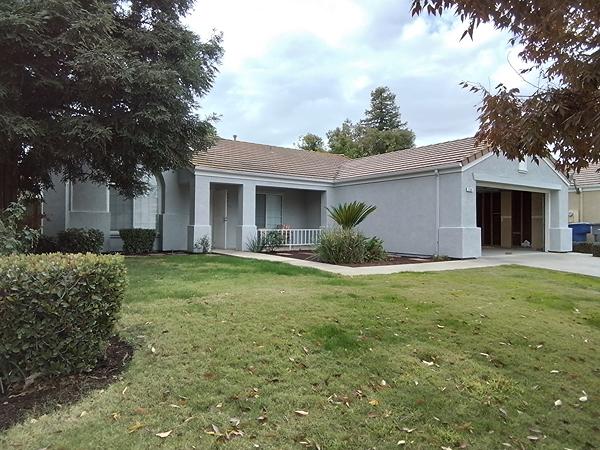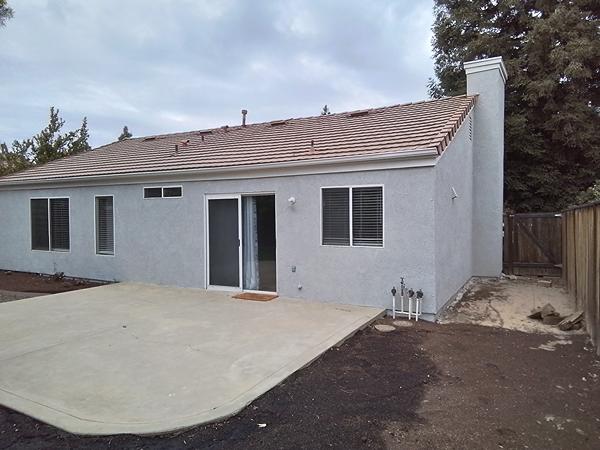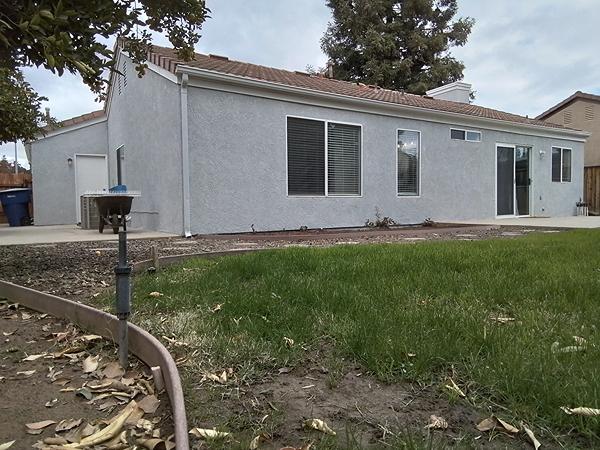Sherlock Home Inspections
(559) 696-4436
Inspector: Curt Rolff
Inspector's email: crolff4@att.net
NACHI15032712
California
California




Summary
| Client(s): | Jacques |
| Property address: | 2381 E El Paso Ave Fresno CA 93720-0247 |
| Inspection date: | Friday, November 15, 2024 |
This report published on Saturday, November 16, 2024 9:22:21 AM PST
This report is the exclusive property of Sherlock Home Inspections and the client(s) listed in the report title. Use of this report by any unauthorized persons is prohibited.
| Safety | Poses a safety hazard | |
| Repair/Replace | Recommend repairing or replacing | |
| Repair/Maintain | Recommend repair and/or maintenance | |
| Minor Defect | Correction likely involves only a minor expense | |
| Maintain | Recommend ongoing maintenance | |
| Evaluate | Recommend evaluation by a specialist | |
| Monitor | Recommend monitoring in the future | |
| Serviceable | Item or component is in serviceable condition | |
| Comment | For your information |
Grounds
1) 
 Cracks, holes, settlement, heaving and/or deterioration resulting in trip hazards were found in the sidewalks or patios. For safety reasons, recommend that a qualified contractor repair as necessary to eliminate trip hazards.
Cracks, holes, settlement, heaving and/or deterioration resulting in trip hazards were found in the sidewalks or patios. For safety reasons, recommend that a qualified contractor repair as necessary to eliminate trip hazards.
2) 
 Vegetation such as trees, shrubs and/or vines was in contact with or less than 10 feet from one or more chimney or flue outlets. This is a safety hazard due to the risk of fire. Vegetation should be pruned and/or removed as necessary to maintain a 10 foot clearance between it and all chimney or flue outlets.
Vegetation such as trees, shrubs and/or vines was in contact with or less than 10 feet from one or more chimney or flue outlets. This is a safety hazard due to the risk of fire. Vegetation should be pruned and/or removed as necessary to maintain a 10 foot clearance between it and all chimney or flue outlets.
Exterior and Foundation
4)  Fungal rot was found at one or more fascia. Conducive conditions for rot should be corrected (e.g. wood-soil contact, reverse perimeter slope). Recommend that a qualified contractor repair as necessary. All rotten wood should be replaced.
Fungal rot was found at one or more fascia. Conducive conditions for rot should be corrected (e.g. wood-soil contact, reverse perimeter slope). Recommend that a qualified contractor repair as necessary. All rotten wood should be replaced.
Additional evidence of exposure to moisture in garage behind fascia.
Additional evidence of exposure to moisture in garage behind fascia.
5)  Fence(s) were attached to or in contact with the building exterior. Such attachments can serve as a pathway for wood-destroying insects and can retain moisture against the exterior after it rains. This is a conducive condition for wood-destroying organisms. Recommend that a qualified person repair as necessary so there is at least a 2-inch gap between fences and building exteriors.
Fence(s) were attached to or in contact with the building exterior. Such attachments can serve as a pathway for wood-destroying insects and can retain moisture against the exterior after it rains. This is a conducive condition for wood-destroying organisms. Recommend that a qualified person repair as necessary so there is at least a 2-inch gap between fences and building exteriors.
6)  Trees were in contact with or were close to the building at one or more locations. Damage to the building can occur, especially during high winds, or may have already occurred (see other comments in this report). Recommend that a qualified tree service contractor or certified arborist remove trees as necessary to prevent damage to the building exterior.
Trees were in contact with or were close to the building at one or more locations. Damage to the building can occur, especially during high winds, or may have already occurred (see other comments in this report). Recommend that a qualified tree service contractor or certified arborist remove trees as necessary to prevent damage to the building exterior.
Roof
7)  Some concrete roof tiles were broken. Leaks may occur as a result. This is a conducive condition for wood-destroying organisms. Recommend that a qualified person replace tiles or make repairs as necessary.
Some concrete roof tiles were broken. Leaks may occur as a result. This is a conducive condition for wood-destroying organisms. Recommend that a qualified person replace tiles or make repairs as necessary.
8)  Significant amounts of debris have accumulated in one or more gutters or downspouts. Gutters can overflow and cause water to come in contact with the building exterior, or water can accumulate around the foundation. This is a conducive condition for wood-destroying organisms. Recommend cleaning gutters and downspouts now and as necessary in the future.
Significant amounts of debris have accumulated in one or more gutters or downspouts. Gutters can overflow and cause water to come in contact with the building exterior, or water can accumulate around the foundation. This is a conducive condition for wood-destroying organisms. Recommend cleaning gutters and downspouts now and as necessary in the future.
9)  Significant amounts of debris such as leaves, needles, seeds, etc. have accumulated on the roof surface. Water may not flow easily off the roof, and can enter gaps in the roof surface. Leaks can occur as a result. This is a conducive condition for wood-destroying organisms. Recommend cleaning debris from the roof surface now and as necessary in the future.
Significant amounts of debris such as leaves, needles, seeds, etc. have accumulated on the roof surface. Water may not flow easily off the roof, and can enter gaps in the roof surface. Leaks can occur as a result. This is a conducive condition for wood-destroying organisms. Recommend cleaning debris from the roof surface now and as necessary in the future.
Garage or Carport
11) 
 The door between the garage and the house had a door stop or unapproved hardware installed on it. This is a potential safety hazard. Such doors should provide limited fire resistance to prevent fire from spreading from the garage to the house. Modifications with unapproved hardware may compromise the door's ability to perform as intended. Recommend that a qualified person remove the doorstop or unapproved hardware.
The door between the garage and the house had a door stop or unapproved hardware installed on it. This is a potential safety hazard. Such doors should provide limited fire resistance to prevent fire from spreading from the garage to the house. Modifications with unapproved hardware may compromise the door's ability to perform as intended. Recommend that a qualified person remove the doorstop or unapproved hardware.
Electric
12) 

 One or more electric receptacles at the kitchen and/or exterior had no visible ground fault circuit interrupter (GFCI) protection, or the inspector was unable to determine if GFCI protection was present. If not GFCI-protected, receptacles in wet areas pose a shock hazard. Recommend that a qualified electrician evaluate and install GFCI protection if necessary and per standard building practices. General guidelines for GFCI-protected receptacles include the following locations:
One or more electric receptacles at the kitchen and/or exterior had no visible ground fault circuit interrupter (GFCI) protection, or the inspector was unable to determine if GFCI protection was present. If not GFCI-protected, receptacles in wet areas pose a shock hazard. Recommend that a qualified electrician evaluate and install GFCI protection if necessary and per standard building practices. General guidelines for GFCI-protected receptacles include the following locations:
https://www.reporthost.com/?GFCI
- Outdoors (since 1973)
- Bathrooms (since 1975)
- Garages (since 1978)
- Kitchens (since 1987)
- Crawl spaces and unfinished basements (since 1990)
- Wet bar sinks (since 1993)
- Laundry and utility sinks (since 2005)
https://www.reporthost.com/?GFCI
13)  One or more receptacles had a prong from a plug broken off in a slot, or slot(s) were clogged with foreign objects. Recommend that a qualified electrician replace such receptacles as necessary.
One or more receptacles had a prong from a plug broken off in a slot, or slot(s) were clogged with foreign objects. Recommend that a qualified electrician replace such receptacles as necessary.
14)  Dead CO detector
Dead CO detector
Water Heater
16) 
 Significant corrosion or rust was found at the supply pipes or fittings. This can indicate past leaks, or that leaks are likely to occur in the future. Recommend that a qualified plumber evaluate and replace components or make repairs as necessary.
Significant corrosion or rust was found at the supply pipes or fittings. This can indicate past leaks, or that leaks are likely to occur in the future. Recommend that a qualified plumber evaluate and replace components or make repairs as necessary.
17) 
 Water stains were found below or near the water heater. This may be a sign that the water heater is failing, or be a sign of a past leak. Consult with the property owner about this and review any disclosure statements. Depending on what information is available about the stains, a qualified plumber should evaluate and make repairs or replace the water heater as necessary.
Water stains were found below or near the water heater. This may be a sign that the water heater is failing, or be a sign of a past leak. Consult with the property owner about this and review any disclosure statements. Depending on what information is available about the stains, a qualified plumber should evaluate and make repairs or replace the water heater as necessary.
Heating, Ventilation and Air Condition (HVAC)
21) 

 The estimated useful life for most forced air furnaces is 15-20 years. This furnace appeared to be beyond this age and/or its useful lifespan and may need replacing or significant repairs at any time. Recommend budgeting for a replacement in the near future.
The estimated useful life for most forced air furnaces is 15-20 years. This furnace appeared to be beyond this age and/or its useful lifespan and may need replacing or significant repairs at any time. Recommend budgeting for a replacement in the near future.
22) 

 The estimated useful life for most heat pumps and air conditioning condensing units is 10-15 years. This unit appeared to be beyond this age and/or its useful lifespan and may need replacing or significant repairs at any time. Recommend budgeting for a replacement in the near future.
The estimated useful life for most heat pumps and air conditioning condensing units is 10-15 years. This unit appeared to be beyond this age and/or its useful lifespan and may need replacing or significant repairs at any time. Recommend budgeting for a replacement in the near future.
Kitchen
24) 
 The range could tip forward. An anti-tip bracket may not be installed. This is a potential safety hazard since the range can tip forward when weight is applied to the open door, such as when a small child climbs on it or if heavy objects are dropped on it. Anti-tip brackets have been sold with all free-standing ranges since 1985. Recommend installing an anti-tip bracket to eliminate this safety hazard. For more information, visit:
The range could tip forward. An anti-tip bracket may not be installed. This is a potential safety hazard since the range can tip forward when weight is applied to the open door, such as when a small child climbs on it or if heavy objects are dropped on it. Anti-tip brackets have been sold with all free-standing ranges since 1985. Recommend installing an anti-tip bracket to eliminate this safety hazard. For more information, visit:
https://www.reporthost.com/?ATB
https://www.reporthost.com/?ATB
25) 
 The exhaust fan over the range recirculated the exhaust air back into the kitchen. This may be due to no duct being installed, baffles not being installed, or problems with duct work. This can be a nuisance for odor and grease accumulation. Where a gas-fired range or cook top is installed, carbon monoxide and excessive levels of moisture can accumulate in living spaces. Recommend that a qualified contractor evaluate and repair as necessary so exhaust air is ducted outdoors.
The exhaust fan over the range recirculated the exhaust air back into the kitchen. This may be due to no duct being installed, baffles not being installed, or problems with duct work. This can be a nuisance for odor and grease accumulation. Where a gas-fired range or cook top is installed, carbon monoxide and excessive levels of moisture can accumulate in living spaces. Recommend that a qualified contractor evaluate and repair as necessary so exhaust air is ducted outdoors.
Bathrooms, Laundry and Sinks
26) 
 The hot and/or cold water supply flow for the shower at location(s) #B was low or inoperable. Recommend that a qualified plumber evaluate and repair as necessary.
The hot and/or cold water supply flow for the shower at location(s) #B was low or inoperable. Recommend that a qualified plumber evaluate and repair as necessary.
Diverter only partially effective. Low flow.
Diverter only partially effective. Low flow.
Interior, Doors and Windows
27) 
 Condensation or staining was visible between multi-pane glass in one windows. This usually indicates that the seal between the panes of glass has failed or that the desiccant material that absorbs moisture is saturated. As a result, the view through the window may be obscured, the window's R-value will be reduced, and accumulated condensation may leak into the wall structure below. Recommend that a qualified contractor evaluate and repair windows as necessary. Usually, this means replacing the glass in window frames.
Condensation or staining was visible between multi-pane glass in one windows. This usually indicates that the seal between the panes of glass has failed or that the desiccant material that absorbs moisture is saturated. As a result, the view through the window may be obscured, the window's R-value will be reduced, and accumulated condensation may leak into the wall structure below. Recommend that a qualified contractor evaluate and repair windows as necessary. Usually, this means replacing the glass in window frames.
Be aware that evidence of failed seals or desiccant may be more or less visible depending on the temperature, humidity, sunlight, etc. Windows or glass-paneled doors other than those that the inspector identified may also have failed seals and need glass replaced. It is beyond the scope of this inspection to identify every window with failed seals or desiccant.
Be aware that evidence of failed seals or desiccant may be more or less visible depending on the temperature, humidity, sunlight, etc. Windows or glass-paneled doors other than those that the inspector identified may also have failed seals and need glass replaced. It is beyond the scope of this inspection to identify every window with failed seals or desiccant.
General Disclaimer
28) 
 This report and inspection does not address and is not intended to address the possible presence of or danger from any potentially harmful substances and environmental hazards including but not limited to radon gas, asbestos, lead paint, mold, urea formaldehyde, flammable or toxic chemicals and water and airborne hazards. Also excluded are inspections and reports on wells, swimming pools, septic and sewer systems, security systems, fire sprinkler and detection systems, lawn sprinkler systems, central vacuum systems, and water softeners.
This report and inspection does not address and is not intended to address the possible presence of or danger from any potentially harmful substances and environmental hazards including but not limited to radon gas, asbestos, lead paint, mold, urea formaldehyde, flammable or toxic chemicals and water and airborne hazards. Also excluded are inspections and reports on wells, swimming pools, septic and sewer systems, security systems, fire sprinkler and detection systems, lawn sprinkler systems, central vacuum systems, and water softeners.
